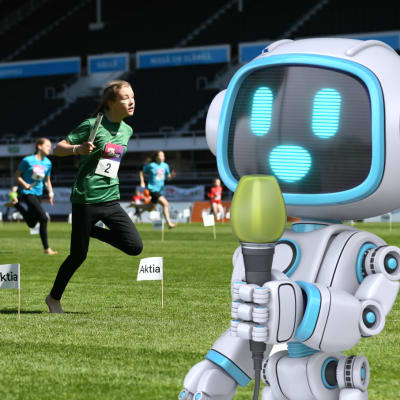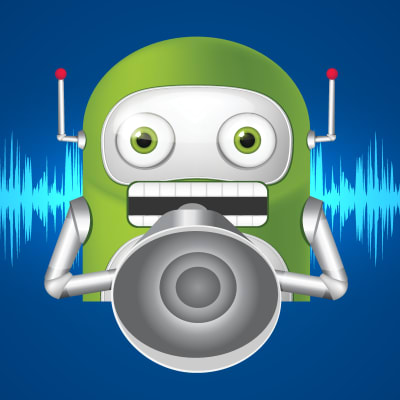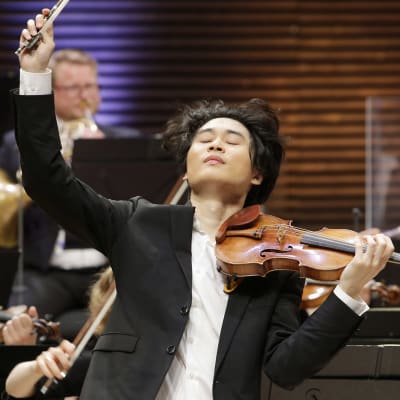AI judge to be trialled in the final of the Sibelius Violin Competition

The finals of this year’s Sibelius Violin Competition was held on 27-29 May in Helsinki. An AI judge trialled in the finals of the competition. Artificial intelligence evaluates the competitors’ performance of the Sibelius Violin Concerto.
What is the AI experiment?
This is a playful experiment that will not affect the outcome of the competition. The results given by the artificial (or, more aptly, assisting) intelligence judge will only be published after the jury has announced the winners.
The experiment was commissioned and funded by Yle Innovations, and conducted by AISpotter from Oulu.
What is being studied?
The experiment examines whether a deep learning neural network can be taught to evaluate artistic performance.
Why are we studying the finalists of the Sibelius Violin Competition?
We are interested in how deep learning neural networks can be used in the future. The Jean Sibelius Violin Competition is an interesting subject for such an experiment, as Yle has recorded all the winning performances since 1965. The archive material has made it possible for the excerpts taught to the neural network to be as extensive and comprehensive as possible.

What does the neural network evaluate?
Conductor and violinist Sakari Oramo, who is also chairman of the Sibelius Violin Competition jury, acts as a kind of “interpreter” between the music and the learning neural network. Oramo has listened to all of the winning performances of the Violin Concerto to date. He selected four parts in the Concerto which, in his estimation, might be played differently by different performers. In these parts, the performance is evaluated as follows: Intonation accuracy, use of vibrato, sound quality, handling of rhythm, cooperation with the orchestra and “that certain something” in the interpretation.

How has the neural network been taught?
The four parts selected and evaluated by Oramo were extracted and sent to AISpotter. The neural network was taught in May. Prior to being taught, the original sound clips were pre-processed, or normalised, to eliminate technical level differences, such as by evening out the sound levels. A spectrogram was calculated for each clip and fed as an input into the neural network. The neural network is assigned parameters and segments from the spectrogram are input. The neural network observes what is visible in the spectrogram when Oramo provides different evaluations of the part. The neural network learns different weightings based on these evaluations. The neural network combines information and attempts to determine how many points should be awarded to the performance based on the teaching material (winning performances from previous years).
Oramo explained to Yle News his role as a teacher of artificial intelligence:
“All of the winning performances were treated equally and evaluated using the same criteria, and naturally there were differences between them. I think there were really, truly brilliant performances and some a little rough around the edges. I tried to describe it using grades so that the artificial intelligence could understand that, aha, that one was good and that one was less good.”

Participants in the experiment
Yle: Katri Henriksson/ Creative Content and Media, Sacha Lagrilliere/ Technical development team and Satu Keto/ and Jari Lahti/ Yle Innovations
AISpotter: Sami Huttunen, Anri Kivimäki and Timo Rousti
Thanks go to: Päivi Pousar and Lauri Ratia/ Sibelius Violin Competition
The finals of the 2022 Sibelius Violin Competition was held on 27-29 May at the Helsinki Music Centre. The competition can be watched as a recording on Yle Areena.
Related links
Tech
Hashing passwords at 1500 requests per second and beyond
Big interactive live events can pose a lot of challenges for authentication and login services. Learn how the Yle ID team managed to improve their login performance with AWS Lambda and Rust.

Streamlining Yle’s visualisation platforms - how we did it
Moving from multiple data visualisation platforms into one by adopting Power BI as a unified visualisation tool has been an important milestone in democratising Yle's data. Here's the story of our journey.

Artifical Intelligence As a Sports Reporter - Does It Work?
An article about a test pilot with Chat GPT as a journalist

Yle awarded the most interesting pilot projects in 2022: Automated radio news, real time movement data, an AI judge, 3D journalism, a text-to-image pilot and many others
Yle awarded the most interesting pilot projects in 2022

한국은 매력적인 시장이다 – Korea is an interesting market!
An article describing South-Korean media ecosystem

The future of audio content is non-linear? Yle’s interactive LGBTQIA+audio drama won Prix Europa Award 2022
Yle won the Prix Europa's Best Digital Audio Project 2022
